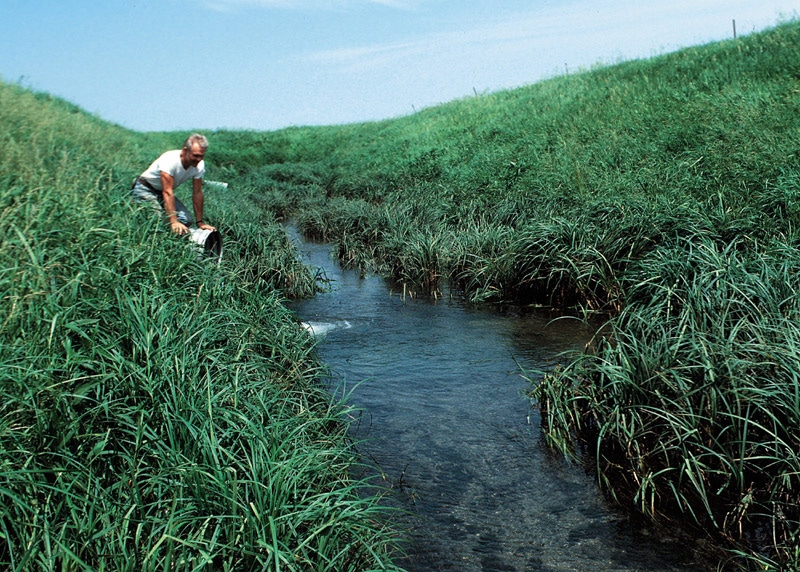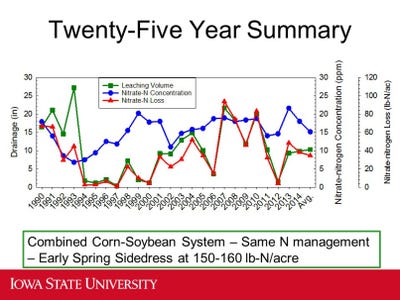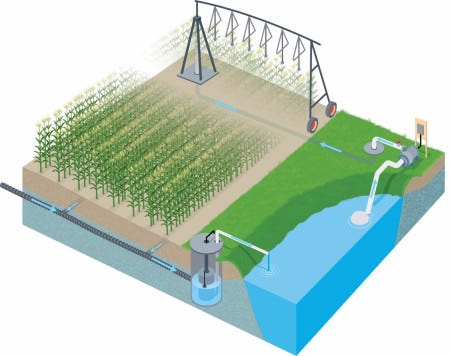October 26, 2016

By popular demand Dr. Matt Helmers set out to address some of the common questions, and sometimes misconceptions, about nitrate loss and drainage in this month’s Iowa Learning Farms webinar. Helmers is the Dean’s Professor in the College of Agriculture and Life Sciences and Professor in the Department of Agricultural and Biosystems Engineering at Iowa State University.
Although the questions are straightforward, the answers are not as simple as yes or no. Helmers uses research from his team, as well as other researchers in the Midwest, to provide the best available answers to the very complex questions of water quality. Watch the full archived webinar on the Iowa Learning Farms website.
Here is a sampling of the questions (and summarized answers):
Q. Is Elevated Nitrate Primarily a Nitrogen Rate Problem?
A. Nitrogen rate management is the first place to start, but it is not enough on its own to reach our goals established by the Iowa Nutrient Reduction Strategy. Moving from 150lb N to the Maximum Return to Nitrogen (MRTN), or economic efficiency of nitrogen, results in about a 9% reduction in nitrate loss. A necessary step on the path of meeting our goals of 41% from non-point sources!
Q. How Does Nitrate Leaching Vary From Year to Year?
A. Precipitation plays a large role in how water moves through the soil profile and the loss of nitrates. Under consistent N-rates, research data shows in years with lower precipitation a higher concentration of nitrates (which is the measurement used to determine water quality e.g. 10 mg/L is the standard for drinking water).

Q. Do Cover Crops Really Reduce Nitrate Loss?
A. Yes – 34-36 percent reductions were observed when a cereal rye cover crop was drilled following crop harvest near Gilmore City in North Central Iowa. This reduction is a conservative estimate as the nitrate loss reduction has been shown to improve with more cover crop growth (achieved with an earlier planting date).
Q. How Do We Reach Our Goals?
A. We need it all – nitrogen management, cropping practices and landuse changes, and edge of field practices like wetlands, bioreactors and more!
 Credit: TransformingDrainage.org, USDA National Institute of Food and Agriculture
Credit: TransformingDrainage.org, USDA National Institute of Food and Agriculture
Q. What’s New on Drainage?
A. Keep an eye out for the new practice – drainage water recycling. The practice looks to store spring drainage water for use later in the growing season and has the potential to also aid in nitrate reduction.
You May Also Like




